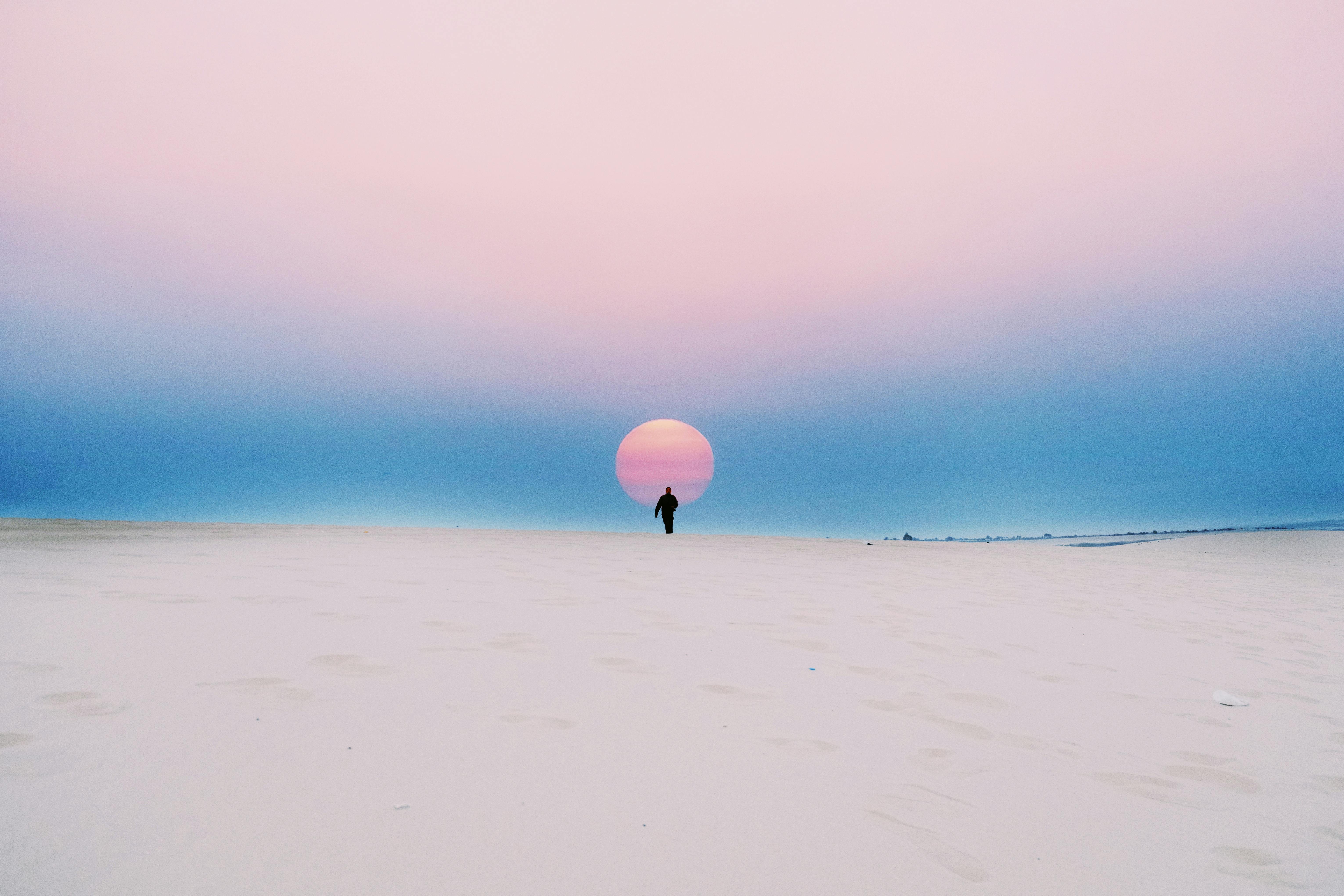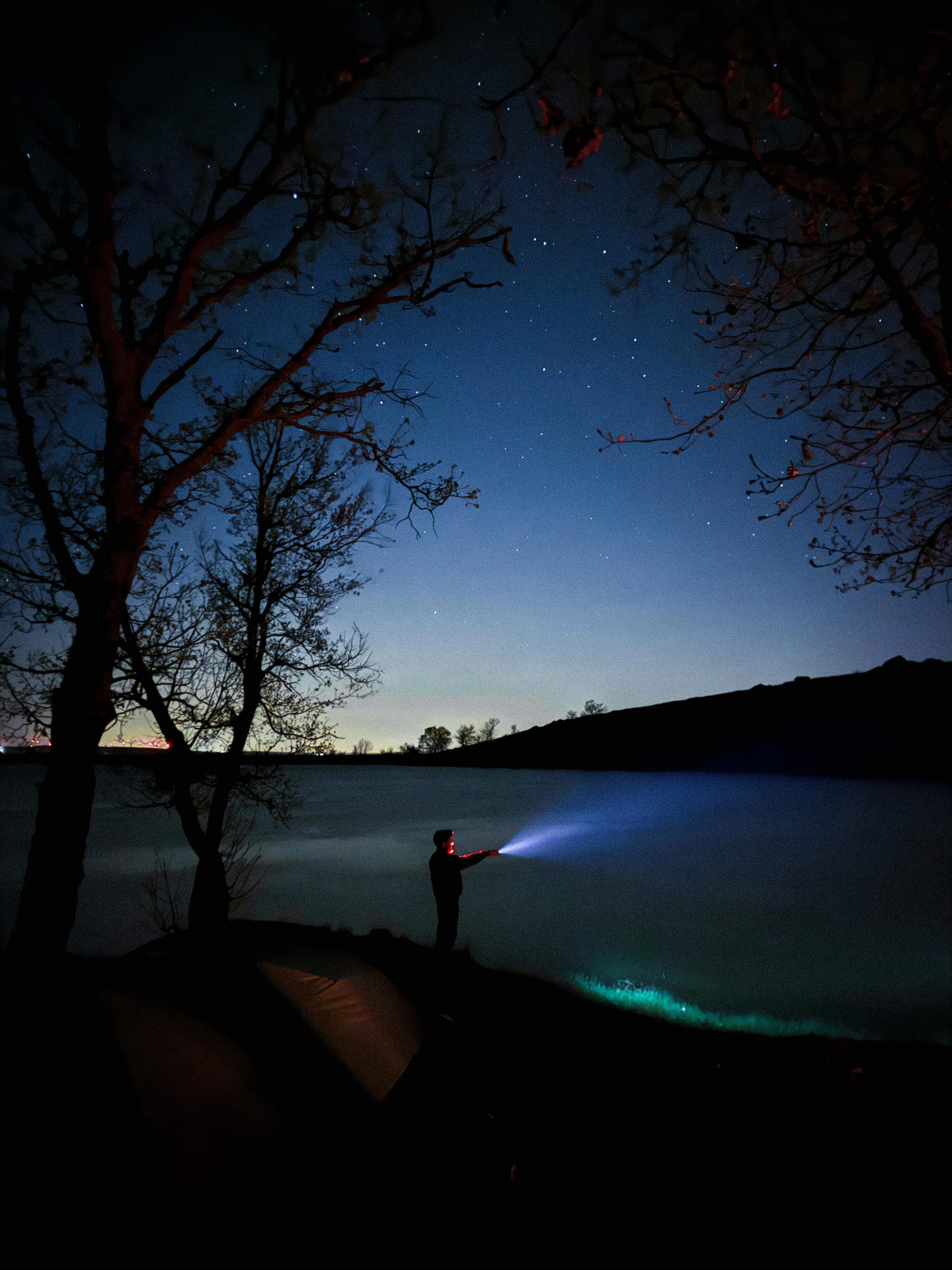Creative Confidence in the Age of Templates

Zach Chmael
Head of Content
8 minutes
Don’t Feed the Algorithm
The algorithm never sleeps, but you don’t have to feed it — Join our weekly newsletter for real insights on AI, human creativity & marketing execution.
Creative Confidence in the Age of Templates
Everyone has the same tools now.
The same AI models. The same design systems. The same "best practices" playbook that gets passed around LinkedIn like a tired meme.
And yet, somehow, most of the work still feels... different. Distinctive. Human.
Which means the tools were never the thing that mattered.
The Template Anxiety is Real
Walk into any marketing team meeting in 2025 and you'll hear it: the quiet panic that AI has made creativity obsolete. That anyone can prompt their way to good work now. That the creative edge—the thing that made you valuable—has been democratized into irrelevance.
We get it.
When ChatGPT can write decent copy and Midjourney can generate compelling visuals, it's easy to wonder: what's left for the humans who used to do those things?
But here's the thing everyone gets wrong about the "AI creativity threat"—and it's exactly why we built Averi the way we did.
The tools were always commoditized. The thinking never was.
Think about it: Photoshop didn't make everyone a designer. WordPress didn't make everyone a writer. Having access to Final Cut Pro didn't turn the world into filmmakers.
Tools amplify taste. They don't create it.
And taste—real creative judgment—comes from something much harder to replicate: the accumulated experience of caring deeply about whether something works or not.

What Creative Confidence Actually Looks Like
Creative confidence isn't about having the best software or the most sophisticated prompts. It's about trusting your ability to recognize good work when you see it, and knowing why it's good.
It's the difference between generating output and curating brilliance.
Creative confidence means:
Knowing when to break the template because you understand what the template is actually trying to accomplish
Trusting your instincts about what resonates with your specific audience, even when the data says otherwise
Being comfortable with iteration because you know great creative work emerges through refinement, not inspiration
Understanding the why behind creative decisions, so you can adapt principles instead of copying tactics
The marketers thriving in 2025 aren't the ones avoiding AI—they're the ones using it as a creative collaborator while maintaining final editorial judgment.
They're the ones who understand what we call "AI + Human" execution at Averi.
They know the difference between a good first draft and great final work. They use AI to amplify their creative capacity, not replace their creative vision.
The Democratization Myth
Here's what the "everyone's creative now" narrative gets wrong: access to tools doesn't equal creative competence any more than access to a piano makes you a musician.
Yes, AI can generate ideas. Lots of them. But most ideas are terrible.
Yes, design tools are more accessible than ever. But most people still create things that look like they were designed by someone who just discovered fonts.
Yes, everyone can publish content now. But most content is forgettable noise that disappears into the void.
The creative edge isn't in the making—it's in the choosing.
Knowing which ideas are worth pursuing. Which designs actually solve the problem. Which content deserves to exist in an already crowded world.
That's still entirely human territory.
When Templates Become Prisons
The real danger isn't that AI makes creativity obsolete. It's that lazy thinking makes creativity irrelevant.
We've all seen it: the marketing that feels like it was assembled from a kit. Blog posts that sound like they were written by the same algorithm. Campaigns that check all the "best practice" boxes but somehow feel lifeless.
This happens when people mistake process for creativity.
It's exactly the problem we set out to solve at Averi. Not by eliminating AI or frameworks, but by ensuring human creative judgment stays at the center of every decision.
Templates are useful—they give you starting points, guardrails, proven structures. But they become prisons when you stop asking whether the template actually serves your specific situation.
The most boring marketing in the world comes from people who follow frameworks religiously instead of understanding what makes frameworks work.
Creative confidence means being comfortable departing from the template when your situation demands it.
The Art of Creative Rebellion
The best work we see at Averi comes from people who understand the rules well enough to break them intelligently.
Our platform connects founders and marketing teams with experts who've mastered this balance—professionals who use AI to explore possibilities faster while applying years of creative experience to recognize what's actually worth pursuing.
They know why most landing pages have headlines above the fold—and they know when theirs shouldn't.
They understand why email subject lines are supposed to be short—and they know when a longer one will cut through the noise.
They've studied why certain design patterns work—and they recognize when their brand needs to stand out by doing something different.
This isn't rebellion for rebellion's sake. It's informed creative decision-making.
It's the difference between copying what works and understanding why it works—so you can make it work better for your specific context.

How AI Actually Enhances Creativity
Here's the plot twist: AI doesn't kill creativity. It kills the tedious parts of creative work that were never actually creative to begin with.
This insight is fundamental to how we think about marketing execution at Averi.
Instead of asking "How do we protect creativity from AI?" we ask "How do we use AI to free up more time for actual creative thinking?"
Before AI: Spend 3 hours writing 10 different headlines, hoping one will be decent.
With AI: Generate 50 headline variations in 10 minutes, then spend 3 hours refining the most promising ones into something brilliant.
The creative work—the taste, the refinement, the strategic thinking about what will resonate—that's still all you.
AI just handles the quantity problem so you can focus on the quality challenge.
The creative professionals winning in 2025 are the ones who:
Use AI to explore more possibilities faster
Apply human judgment to identify the best directions
Iterate and refine with both tools and taste
Maintain final creative authority over what ships
They're not threatened by AI. They're liberated by it.
Building Your Creative Immune System
Creative confidence in the template age requires developing what we like to call a "creative immune system"—the ability to recognize and resist homogenized thinking while staying open to useful tools and techniques.
Your creative immune system gets stronger when you:
Study the originals, not the copies. Instead of analyzing what your competitors are doing, go back to the foundational work that inspired their approach. Understand principles, not just tactics.
Develop strong opinions about what works. Don't just follow best practices—understand why they became best practices, and when they might not apply to your situation.
Create constraints that force creativity. Instead of infinite possibility (which is paralyzing), create specific challenges that push you toward original solutions.
Ship work you're proud of. Not work that checks boxes or follows formulas, but work that solves real problems in ways that feel distinctly yours.
Get comfortable being wrong. Creative confidence isn't about always being right—it's about being willing to try things that might not work, because that's where breakthrough ideas live.

The New Creative Collaboration
The future of creative work isn't human vs. AI. It's human with AI, where each party does what they do best.
This philosophy drives everything we've built at Averi. Our platform doesn't replace creative professionals—it connects you with the best ones while giving them AI-powered tools that amplify their capabilities.
AI excels at: Pattern recognition, rapid iteration, infinite patience, broad knowledge synthesis.
Humans excel at: Context understanding, emotional intelligence, strategic thinking, taste development.
Together, they create: More possibilities explored, faster iteration cycles, better final outcomes.
We see this collaboration in action daily. Our AI helps marketing experts explore more creative territories faster. But the experts are still the ones deciding which territories are worth exploring, and which ideas are worth bringing to life.
The technology amplifies the creative capacity. It doesn't replace the creative judgment.
The Courage to Be Specific
Template culture encourages generic solutions that work for everyone and delight no one. Creative confidence means having the courage to be specific—to create work that resonates deeply with your particular audience, even if it doesn't appeal to everyone else.
This is why we built Averi's expert network the way we did. Instead of generic contractors or one-size-fits-all AI tools, we connect you with specialists who understand your specific industry, audience, and creative challenges.
This means:
Developing a distinctive brand voice instead of adopting "best practice" tone
Creating content that reflects your specific worldview instead of generic industry insights
Designing experiences that serve your particular customers instead of hypothetical personas
Building campaigns that only make sense for your brand instead of adaptable frameworks
The irony of the template age is that the most valuable work is the work that can't be templated.
Your Creative Renaissance Starts Now
The creative opportunities available today are unprecedented. You have access to tools that would have been science fiction a decade ago. You can test ideas faster, iterate more rapidly, and reach audiences more directly than any generation of creative professionals before you.
At Averi, we're building for this new creative reality.
A platform where AI amplifies human creativity instead of replacing it. Where you can access world-class creative talent without the overhead of traditional agencies. Where strategy, execution, and optimization happen in harmony rather than silos.
But only if you bring your full creative capacity to the table.
Only if you develop the taste to know what's worth making.
Only if you build the confidence to trust your creative instincts.
Only if you resist the urge to delegate your creative judgment to algorithms or frameworks or "best practices" that don't understand your specific situation.
The templates are there when you need them. The AI is there when you want it.
But the creative vision—the thing that makes work matter—that's still entirely yours.
And in a world where everyone has access to the same tools, that creative vision is more valuable than ever.
The question isn't whether AI will replace creativity.
The question is whether you'll develop the creative confidence to use these new tools in service of work that couldn't exist without your particular way of seeing the world.
At Averi, we're betting on the humans who say yes to that challenge.
TL;DR
🎨 Tools don't create taste: AI democratizes execution but creative judgment remains entirely human—knowing what's worth making is the new creative edge
🚫 Template anxiety is misguided: The real threat isn't AI replacing creativity, it's lazy thinking that treats frameworks as final solutions instead of starting points
⚡ AI amplifies rather than replaces: The best creative work in 2025 comes from humans using AI to explore more possibilities while maintaining final creative authority
🎯 Specificity beats genericity: In a template-driven world, the most valuable work is what can't be templated—distinctive solutions for particular audiences
🔥 Creative confidence is learnable: Develop taste by studying originals, create constraints that force innovation, and have courage to depart from best practices when your situation demands it




